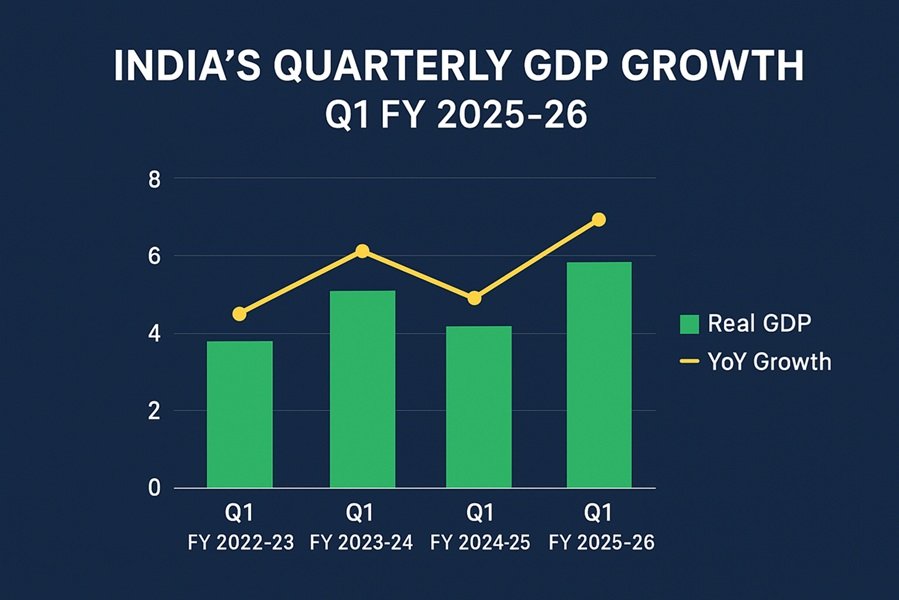
Introduction to ITR Forms
Income Tax Returns (ITR) are filed based on income sources, taxpayer category, and exemptions claimed. The Income Tax Department provides different ITR forms for different taxpayers. In this guide, we will explore the four most commonly used ITR forms—ITR-1, ITR-2, ITR-3, and ITR-4—for Assessment Year (AY) 2025-26.
ITR-1 (Sahaj) – For Salaried Individuals
Who Can File ITR-1?
ITR-1 is suitable for:
- Resident individuals (not HUFs or non-residents)
- Those earning up to ₹50 lakh annually from the following sources:
- Salary or pension
- One house property (not involving loss carry-forward)
- Other income (e.g., interest from savings, fixed deposits, etc.)
Who Cannot File ITR-1?
- Non-residents or HUFs
- Individuals earning above ₹50 lakh
- Those having:
- More than one house property
- Capital gains income
- Business/professional income
- Agricultural income exceeding ₹5,000
- Foreign assets or foreign income
Documents Required
- Form 16 (for salaried individuals)
- Interest income certificates (if any)
- PAN and Aadhaar
- Bank account details
ITR-1 Filing Process
- Login to the Income Tax e-Filing portal.
- Select ITR-1 and the Assessment Year 2025-26.
- Enter income details from Form 16 and other sources.
- Verify tax calculations and claim deductions.
- Submit and e-verify the return using Aadhaar OTP, net banking, or sending ITR-V to CPC, Bengaluru.
ITR-2 – For Individuals and HUFs with Capital Gains or Foreign Income
Who Can File ITR-2?
ITR-2 is for:
- Individuals and Hindu Undivided Families (HUFs) who:
- Earn above ₹50 lakh
- Have capital gains/losses from investments (stocks, real estate, etc.)
- Own more than one house property
- Earn foreign income or hold foreign assets
- Have agricultural income exceeding ₹5,000
Who Cannot File ITR-2?
- Individuals with business or professional income
- Those eligible for ITR-1
Documents Required
- Form 16 and salary slips
- Form 26AS (TDS details)
- Capital gains statements (from brokers, mutual funds, etc.)
- Foreign asset declarations (if applicable)
- Bank details and interest income proof
ITR-2 Filing Process
- Gather income details and required documents.
- Select ITR-2 on the e-Filing portal.
- Enter capital gains, rental income, foreign earnings, and deductions.
- Review and verify tax computation.
- Submit and e-verify using Aadhaar OTP, net banking, or ITR-V submission.
ITR-3 – For Individuals and HUFs with Business or Professional Income
Who Can File ITR-3?
ITR-3 is for individuals and HUFs running a business or profession, including:
- Business owners and entrepreneurs
- Freelancers, consultants, and professionals (doctors, engineers, architects, etc.)
- Individuals with income from partnership firms
- Those earning from directors’ remuneration
- Those having capital gains, multiple properties, and foreign income
Who Cannot File ITR-3?
- Salaried individuals without business income (ITR-1 or ITR-2 is applicable for them)
- Individuals opting for presumptive taxation (ITR-4 is applicable)
Documents Required
- Profit & Loss statement and balance sheet (if applicable)
- Business invoices and receipts
- TDS certificates and Form 26AS
- Bank statements and GST filings (if registered under GST)
- Foreign income and assets details (if applicable)
ITR-3 Filing Process
- Maintain profit & loss statement and balance sheet.
- Select ITR-3 on the e-Filing portal.
- Enter business income, professional fees, capital gains, and deductions.
- Verify tax liability and claim applicable deductions.
- Submit and e-verify the return.
ITR-4 (Sugam) – For Presumptive Taxation Scheme
Who Can File ITR-4?
ITR-4 is for individuals, HUFs, and firms (excluding LLPs) opting for presumptive taxation under:
- Section 44AD (business income up to ₹2 crore)
- Section 44ADA (professionals with income up to ₹50 lakh)
- Section 44AE (transport businesses with up to 10 goods vehicles)
Who Cannot File ITR-4?
- Businesses/firms with turnover exceeding ₹2 crore
- Professionals earning above ₹50 lakh
- Individuals with capital gains or foreign assets
- Individuals earning from speculative business (like intraday trading)
Documents Required
- Business invoices and receipts (if any)
- GST details (if registered)
- Form 16A (for TDS on professional payments)
- Bank statements
ITR-4 Filing Process
- Choose ITR-4 and the relevant presumptive taxation scheme.
- Enter income details (business/professional earnings).
- Verify tax calculations (based on the fixed percentage of turnover under the presumptive scheme).
- Submit and e-verify the return.
Comparison of ITR-1, ITR-2, ITR-3, and ITR-4
| Feature | ITR-1 (Sahaj) | ITR-2 | ITR-3 | ITR-4 (Sugam) |
|---|---|---|---|---|
| Applicable to | Salaried individuals with income up to ₹50 lakh | Individuals/HUFs with capital gains or foreign income | Individuals/HUFs with business or professional income | Individuals, HUFs, firms under presumptive taxation |
| Business/Professional Income | ❌ | ❌ | ✅ | ✅ (Under Presumptive Taxation) |
| Capital Gains | ❌ | ✅ | ✅ | ❌ |
| Foreign Income | ❌ | ✅ | ✅ | ❌ |
| Presumptive Taxation | ❌ | ❌ | ❌ | ✅ |
| Multiple House Properties | ❌ | ✅ | ✅ | ❌ |
| Foreign Assets | ❌ | ✅ | ✅ | ❌ |
Conclusion
Choosing the right ITR form is crucial for seamless tax filing. Ensure you pick the correct form based on your income sources, business activities, and deductions. Filing the wrong form may result in rejections, penalties, or additional scrutiny by the Income Tax Department. Stay updated with tax regulations and file your return well before the deadline to avoid last-minute issues.







